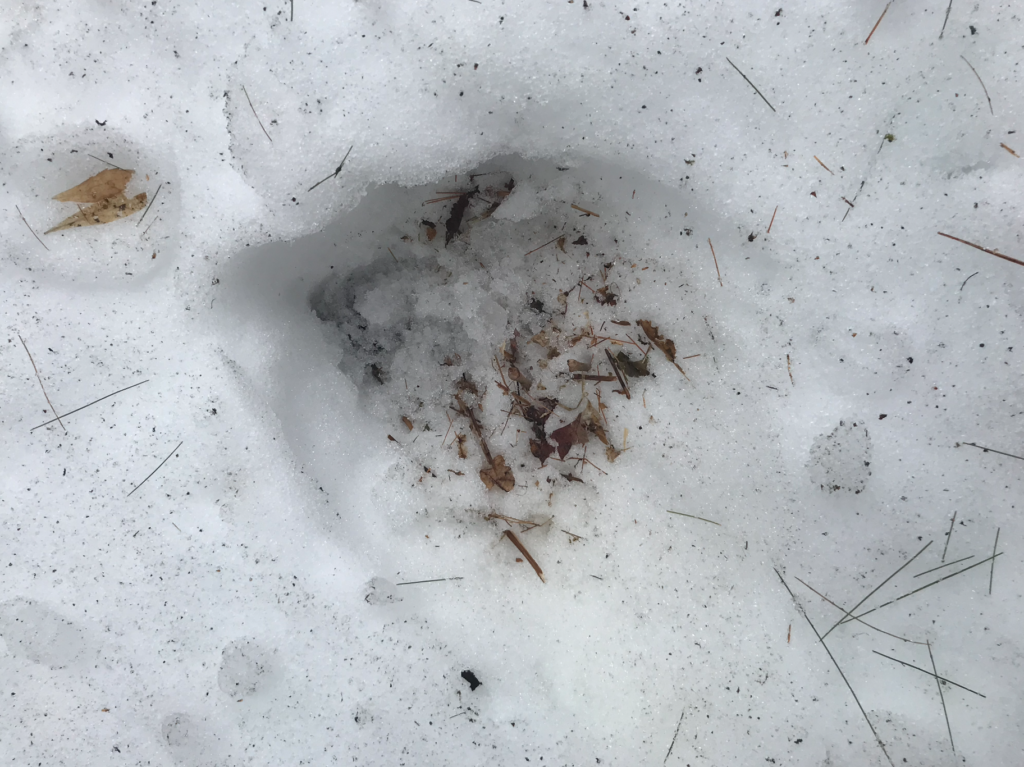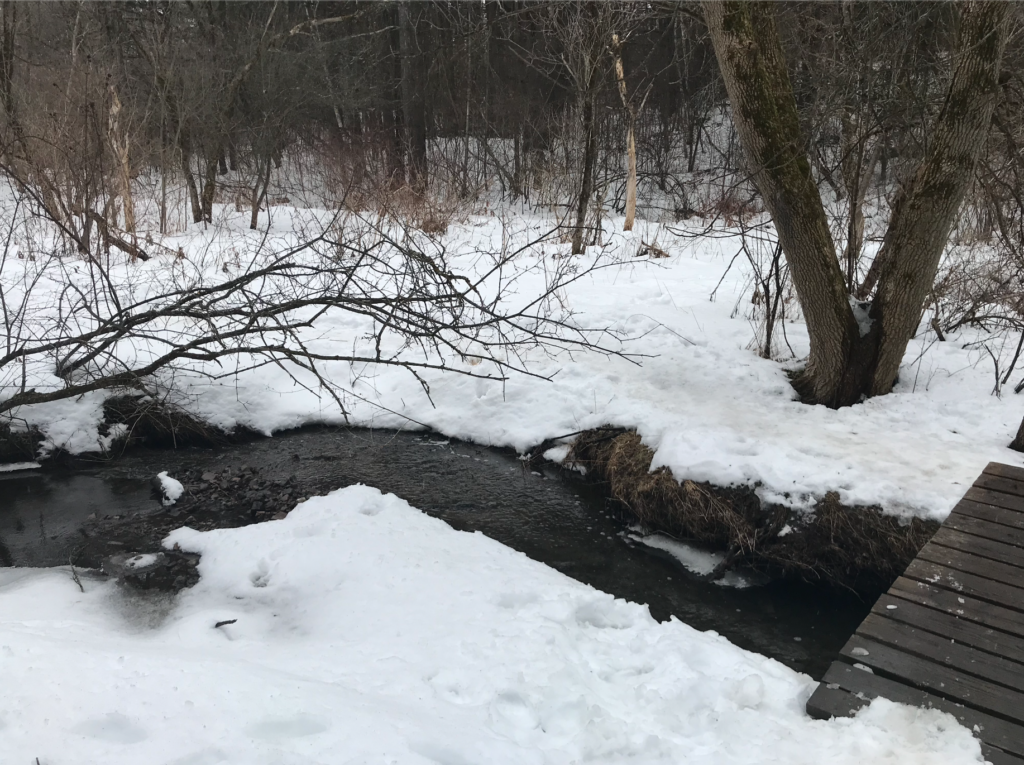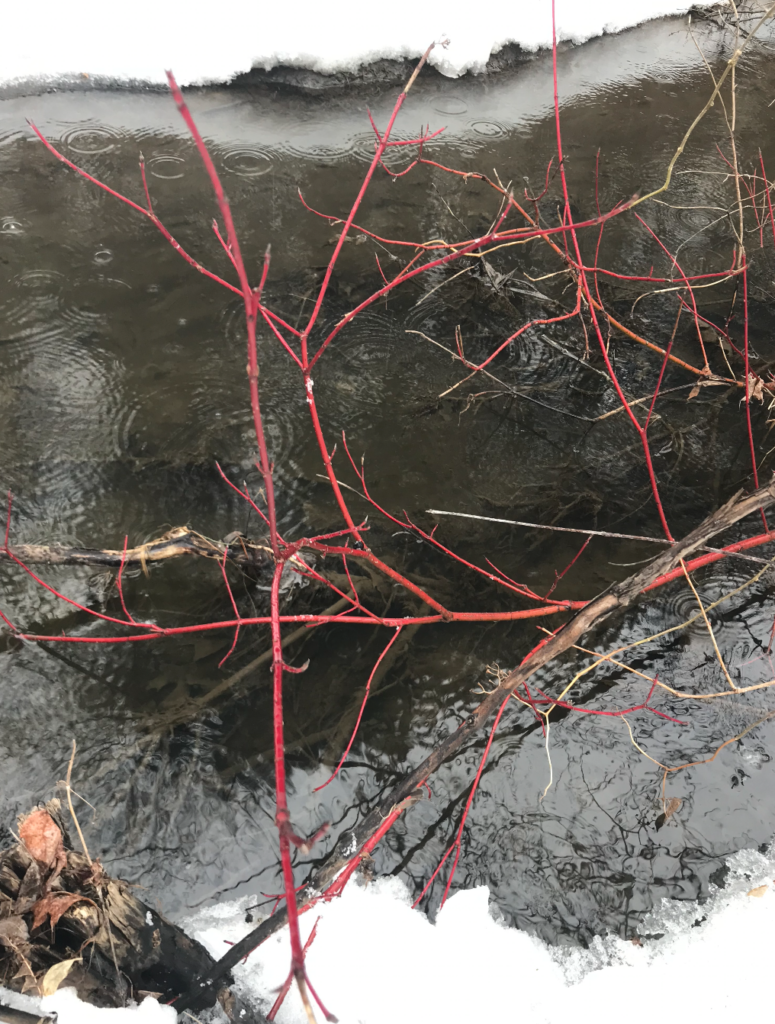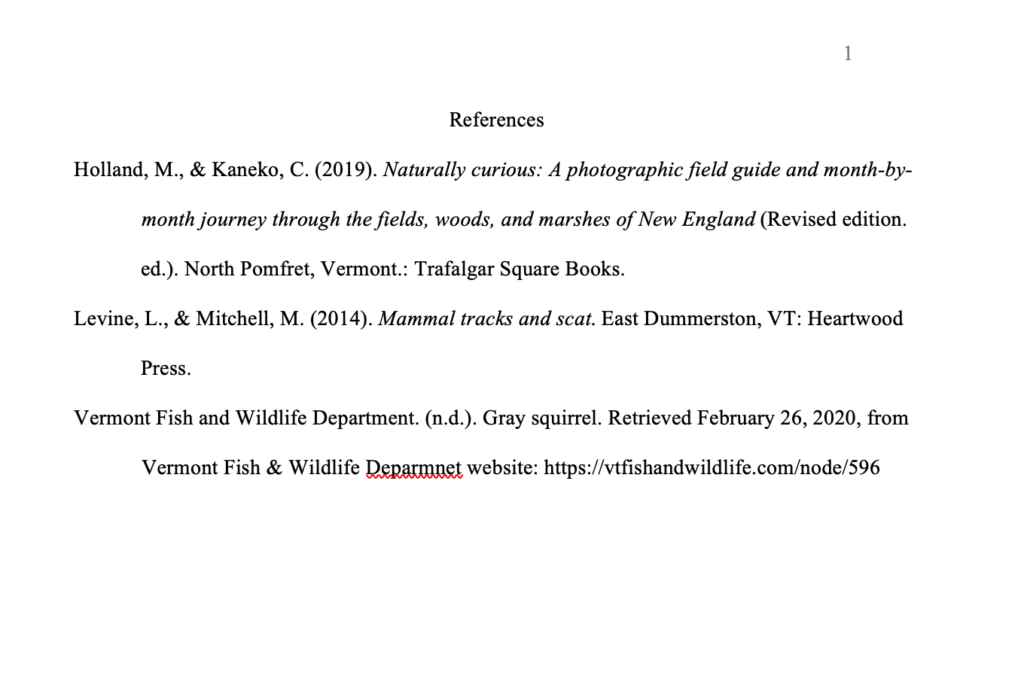
Upon first arriving at my sight, I accidentally scared off a gray squirrel that ran up an oak tree, not unusual since oak trees are where squirrels get much of their food from.While I looked around my sight, although I saw numerous small divots, it was hard to discern any actual tracks since it had been a while since it last snowed. After more searching, I found a hole that some animal had dug (Figure 1). Upon first seeing it, I believed it to be a hole dug by someones dog that smelled something and left the trail to try to find. But upon remembering my squirrel sighting, I believed it possible that this hole was actually a nut cache made by squirrel in preparation for the winter. Before winter comes, squirrels collect nuts and seeds and bury them beneath the soil, so that when winter comes, and trees stop producing nuts, the squirrels will have some source of food to help them survive the cold. During the night, this consumption of food is important because it helps them to survive the bitter cold night huddled up in their dens (Agency of Natural Resources). On days that it isn’t too cold, squirrels will go outside and forage or go to nut caches, being careful for predators like weasels, hawks, foxes, and even domestic dogs. They must be wary during the nights for raccoons who are at the peak of their mating season during this time (Holland).

Figure 2 Brown, C. (2020). [View of Sight]. 
Figure 3 Brown, C. (2020). [Dogwood Shrub].
Compared to the last time I visited my sight, not much has changed. All the vegetation is leafless and barren, although the only vegetation with some color is a dogwood shrub (Figure 3) that has turned bright red, very easy to see in contrast with the white snow. Another noticeable change is the amount of water flowing through the stream (Figure 2). This is due to the couple of days of warm temperatures, previous to when I visited, that melted the snow, adding water to the stream.

